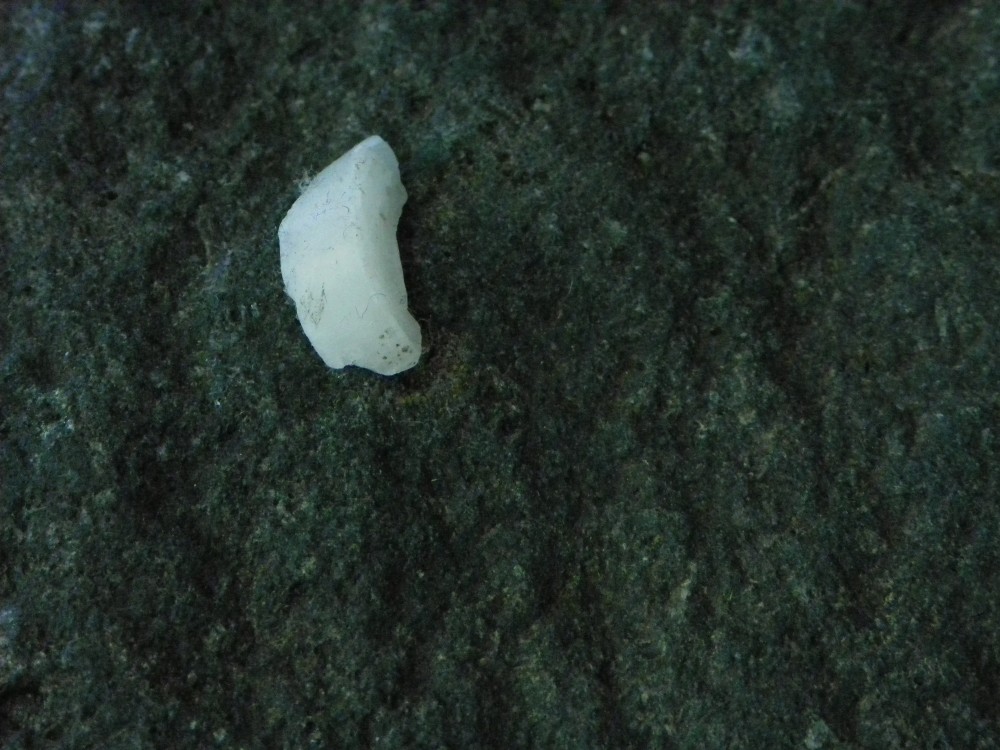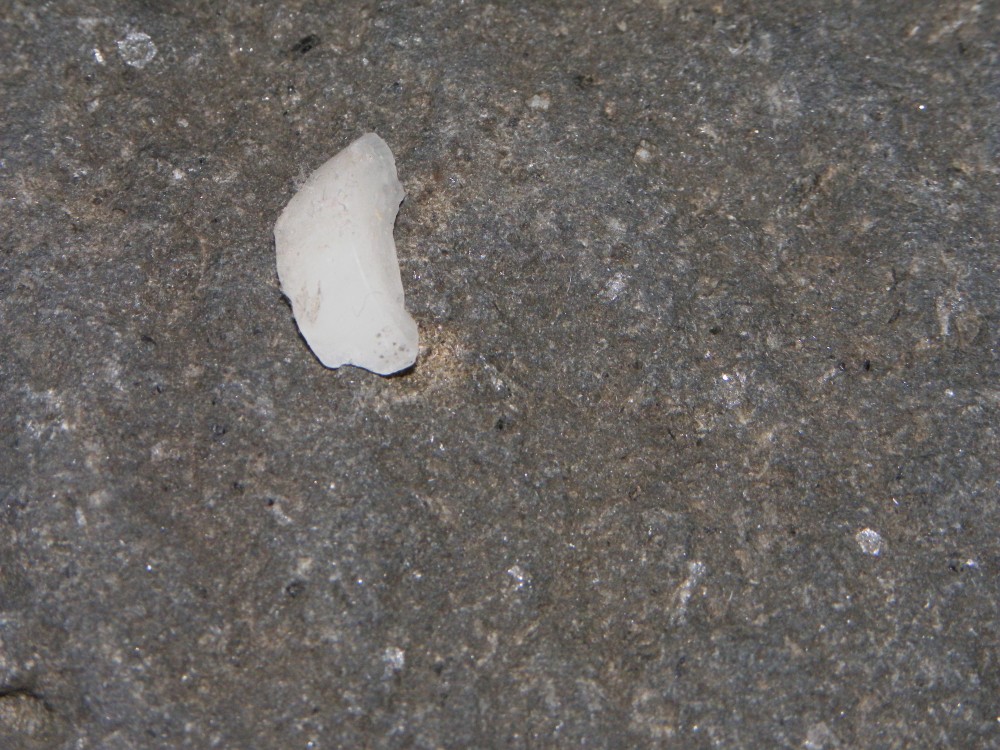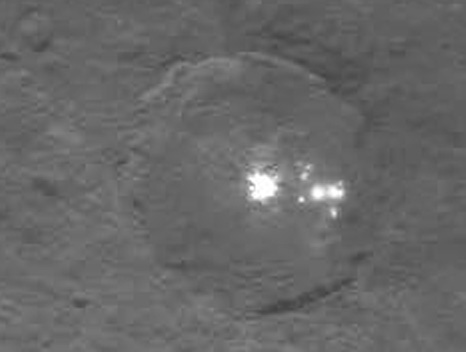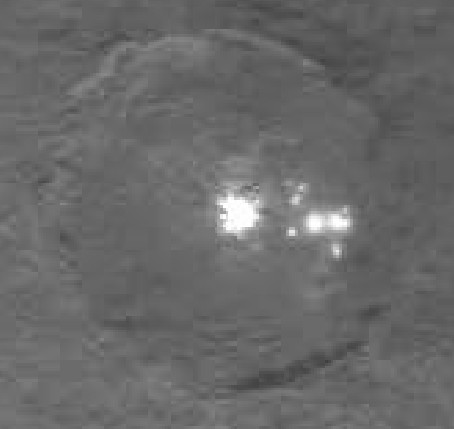It looks like you're using an Ad Blocker.
Please white-list or disable AboveTopSecret.com in your ad-blocking tool.
Thank you.
Some features of ATS will be disabled while you continue to use an ad-blocker.
share:
originally posted by: MysterX
I've been asking the question...are there any images posted or about to be posted, that show this area while it is in 'night'...nobody has answered, so either nobody knows, or those images don't exist...which is a little strange considering much of the probes view is of Ceres in darkness, as it was approaching with Ceres between it and the sun.
As far as I know, I have never seen any photos of any planet taken on the "night side".
Here are three photos I just took to try to replicate what I mean.
As I don't have a planet "dark as coal" handy I had to use a basalt block and a piece of a wax candle, and this is what I got.
First, with the right exposure to show the details on the basalt block.

As we can see the piece of the candle appears almost completely white.
When I changed the exposure to get a good view of the candle I got this.

We can see that some details on the candle were completely "drowned" by the white around them.
Just because I could do it I tried to use the flash to see what I would get, and this is the result.

I hope that helps to show what I mean when I say that I think the white area is overexposed and that, because of that, any details it may have do not show on the photos.
As I don't have a planet "dark as coal" handy I had to use a basalt block and a piece of a wax candle, and this is what I got.
First, with the right exposure to show the details on the basalt block.

As we can see the piece of the candle appears almost completely white.
When I changed the exposure to get a good view of the candle I got this.

We can see that some details on the candle were completely "drowned" by the white around them.
Just because I could do it I tried to use the flash to see what I would get, and this is the result.

I hope that helps to show what I mean when I say that I think the white area is overexposed and that, because of that, any details it may have do not show on the photos.
Seems to be overexposure combined with the low resolution preventing solid information about the identification.
Remember seeing IR photos indicating no thermal change at the spots.
Remember seeing IR photos indicating no thermal change at the spots.
originally posted by: Soloprotocol
To me the Largest/ brightest part is dead centre of that crater...I'm going with, whatever it is, the meteor strike was the eventual cause of what we are seeing today...Melted Surface something ??
To me, there definitely seems to run-off towards the bottom of the centre spot. Perhaps it was hit by a slushball/comet and some ice got ejected towards the left?
originally posted by: ArMaP
originally posted by: MysterX
I've been asking the question...are there any images posted or about to be posted, that show this area while it is in 'night'...nobody has answered, so either nobody knows, or those images don't exist...which is a little strange considering much of the probes view is of Ceres in darkness, as it was approaching with Ceres between it and the sun.
As far as I know, I have never seen any photos of any planet taken on the "night side".
There are many photos of moons or planets as a thin crescent, revealing a lot of the "night side", including Ceres: photojournal.jpl.nasa.gov...
I'm quite sure that NASA got many such images of Ceres, and I'm sure the white spot is there somewhere, meaning that it doesn't emmit light but rather reflects it.
edit on 18-5-2015 by wildespace because: (no reason given)
Most, if not all of the images of Ceres are less than 100 percent lighted; that is--less than 'full', as we say of the Moon. The bright spots can
be seen rotating out of, or into the sunlight, in at least two animated sequences of these images. The bright spots appear to shine, even when the
floor of the surrounding crater is dark.
Much has been made of how the bright spots eventually fade out when rotating away from Dawn's point of view, or fade in when rotating toward it. This is used to argue for purely reflective objects, but this neglects the fact that the bright spots appear to shine, at times, out of a surrounding darkness.
I believe that a better description of what is happening is that objects that direct most of their light upward turn their light away from Dawn's camera, or toward it as they rotate, and so appear to fade out, or fade in.
If anyone can produce solid evidence that the area of the bright spots has been photographed when it is facing Dawn's camera straight on, or within a reasonable angle of this position, and that surface is dark, I would like to learn of it, as I'm sure many others would, as well.
Much has been made of how the bright spots eventually fade out when rotating away from Dawn's point of view, or fade in when rotating toward it. This is used to argue for purely reflective objects, but this neglects the fact that the bright spots appear to shine, at times, out of a surrounding darkness.
I believe that a better description of what is happening is that objects that direct most of their light upward turn their light away from Dawn's camera, or toward it as they rotate, and so appear to fade out, or fade in.
If anyone can produce solid evidence that the area of the bright spots has been photographed when it is facing Dawn's camera straight on, or within a reasonable angle of this position, and that surface is dark, I would like to learn of it, as I'm sure many others would, as well.
Something different?
originally posted by: Phage
a reply to: Soylent Green Is People
Enceladus has a high albedo but it is not really very bright, as you point out it recieves very little sunlight.
True. That's why I compared it to Enceladus, which is very bright. Enceladus, being more than three times further away from the Sun, would receive about nine or ten time less solar energy than Ceres does (considering the inverse square law).
I agree with what you said earlier. The bright areas are bright only in comparison to the rest of the surface. But there is a dramatic difference never the less. They do have a much higher albedo. That indicates that there is something very different about them.
The point is that even if the rest of Ceres is made up of non-bright material, how does that fact effect the ability of other more reflective materials on Ceres (such as ice or mineral salts) to cause an image sensor overload?
Phage, have you noted the absence of "Impact Streamers" from the center of the crater? If it were a reflective material that impacted you would expect to see light colored streams of the material leading away from the impact point. Wouldn't you?
originally posted by: All Seeing Eye
Something different?
originally posted by: Phage
a reply to: Soylent Green Is People
Enceladus has a high albedo but it is not really very bright, as you point out it recieves very little sunlight.
True. That's why I compared it to Enceladus, which is very bright. Enceladus, being more than three times further away from the Sun, would receive about nine or ten time less solar energy than Ceres does (considering the inverse square law).
I agree with what you said earlier. The bright areas are bright only in comparison to the rest of the surface. But there is a dramatic difference never the less. They do have a much higher albedo. That indicates that there is something very different about them.
The point is that even if the rest of Ceres is made up of non-bright material, how does that fact effect the ability of other more reflective materials on Ceres (such as ice or mineral salts) to cause an image sensor overload?
Phage, have you noted the absence of "Impact Streamers" from the center of the crater? If it were a reflective material that impacted you would expect to see light colored streams of the material leading away from the impact point. Wouldn't you?
Actually, now that I'm thinking of this as a possible result of an impact, the white feature looks like material that bounced up as part of the crater's central peak. We've seen many such central peaks in lunar craters, this might be one like that, but with some very reflective material exposed. I'd go for salts / gypsum or something like that, rather than ice.
dawn.jpl.nasa.gov...
new picture, CLOSER!!! May 16, 2015, from a distance of 4,500 miles (7,200 kilometers).
new picture, CLOSER!!! May 16, 2015, from a distance of 4,500 miles (7,200 kilometers).
originally posted by: egidio88
dawn.jpl.nasa.gov...
new picture, CLOSER!!! May 16, 2015, from a distance of 4,500 miles (7,200 kilometers).
An enlargement of that latest image shows that what looked to be a single long bright patch on the right in previous images can now be seen to be multiple bright spots (two major ones, plus maybe some minor spots) in this latest image. Maybe the next closer image with even better resolution would show us that it is made up of more than just what we see here.

edit on 5/20/2015 by Soylent Green Is People because: (no reason given)
a reply to: Soylent Green Is People
We should put that backup to curiosity rover on a rocket and land it there. Maybe skip Mars and send men there first. Seem like be easier to launch off there than mars. If lights are water ice they can make fuel and drink!
We should put that backup to curiosity rover on a rocket and land it there. Maybe skip Mars and send men there first. Seem like be easier to launch off there than mars. If lights are water ice they can make fuel and drink!
Now that the Dawn spacecraft is only 4500 miles from Ceres, and entering orbit, scientists at NASA have been able to study the spots a bit more, and
conclude that they are indeed reflecting intense sunlight off of highly reflective material on the surface. As to what that material is, they have not
figured it out. However, it is probably safe to say that they are NOT emitting their own light when you take into account how high the gain and
gamma/contrast has to be turned up to even see the difference, since Ceres is pretty much just charcoal black.
Dawn spacecraft lates news
Dawn spacecraft lates news
The largest of the bright spots now appears to be shaped something like a short arrowhead, or a crescent shape that's been stretched along its
horizontal axis. It appears that its pointed end directly faces the center of other group of bright spots, which formerly appeared rectangular.
originally posted by: Ross 54
The largest of the bright spots now appears to be shaped something like a short arrowhead, or a crescent shape that's been stretched along its horizontal axis. It appears that its pointed end directly faces the center of other group of bright spots, which formerly appeared rectangular.
Just like the bright patch that formerly looked rectangular (when imaged from a higher orbit) can now be resolved as being two or more side-by-side spots in these newer images taken from a lower orbit, I wonder if the single crescent-shaped spot will turn out to be a grouping of smaller spots when imaged from a still lower orbit than the present one...Or when they image the spots without being so over-exposed.
edit on 5/20/2015 by Box of Rain because: (no reason given)
I wouldn't be a bit surprised to see the bright spots appear to change shape somewhat again, or to resolve into more individual, smaller spots, as
better images become available. At any point so far, I've been content to describe what can be seen, in an effort to understand what is there. It
stands to reason that each improvement in images more accurately conveys what is actually there.
new topics
-
Regent Street in #London has been evacuated due to a “bomb threat.”
Other Current Events: 10 minutes ago -
It’s Falling…
Philosophy and Metaphysics: 1 hours ago -
Steering the Titantic from the Drydock.
Rant: 4 hours ago
top topics
-
House Passes Laken Riley Act
Mainstream News: 16 hours ago, 24 flags -
Steering the Titantic from the Drydock.
Rant: 4 hours ago, 9 flags -
Hearing more ambulances lately
Medical Issues & Conspiracies: 15 hours ago, 8 flags -
Los Angeles brush fires latest: 2 blazes threaten structures, prompt evacuations
Mainstream News: 15 hours ago, 7 flags -
Paramilitary Leaks - John Williams
Whistle Blowers and Leaked Documents: 13 hours ago, 7 flags -
The more I think about it
General Chit Chat: 16 hours ago, 4 flags -
Some sausage, some chicken, some sauce, some onions and some garlic...and some peppers!
Food and Cooking: 15 hours ago, 3 flags -
It’s Falling…
Philosophy and Metaphysics: 1 hours ago, 3 flags -
Regent Street in #London has been evacuated due to a “bomb threat.”
Other Current Events: 10 minutes ago, 1 flags
active topics
-
Steering the Titantic from the Drydock.
Rant • 18 • : angelchemuel -
Los Angeles brush fires latest: 2 blazes threaten structures, prompt evacuations
Mainstream News • 16 • : BeyondKnowledge3 -
Greatest thing you ever got, or bought?
General Chit Chat • 27 • : mysterioustranger -
Regent Street in #London has been evacuated due to a “bomb threat.”
Other Current Events • 0 • : putnam6 -
Russia Ukraine Update Thread - part 3
World War Three • 6901 • : bastion -
Hearing more ambulances lately
Medical Issues & Conspiracies • 3 • : mysterioustranger -
Some sausage, some chicken, some sauce, some onions and some garlic...and some peppers!
Food and Cooking • 3 • : mysterioustranger -
It’s Falling…
Philosophy and Metaphysics • 1 • : mysterioustranger -
ILLUMINATION: Dimensions / Degrees – Da Vincis Last Supper And The Philosophers Stone
Secret Societies • 23 • : CarlLaFong -
House Passes Laken Riley Act
Mainstream News • 18 • : Xtrozero

